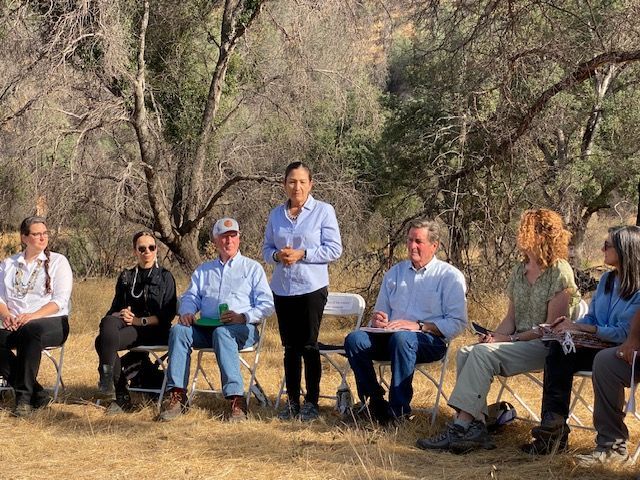Tuleyome's Policy Corner - Protecting our Public Lands

Secretary Deb Haaland addressing Molok Luyuk round table with Representatives Thompson and Garamendi
As you know, we were honored by a visit to Molok Luyuk and the region by DOI Secretary Haaland, BLM Director Stone-Manning and Representatives Garamendi and Thompson at the end of September. It was an important opportunity to hear from them and our Tribal Partners on their priorities and to share why this unique place needs to be protected.
On October 11th, our Congressional champions, Senator Alex Padilla and Representatives Garamendi and Thompson reiterated their calls to protect Molok Luyuk. They led a letter from California Representatives to President Biden and Interior Secretary Deb Haaland urging the Administration to use its authority under the Antiquities Act of 1906 to expand the Berryessa Snow Mountain National Monument to protect the entirety of Molok Luyuk.
Citing the significance of the area to, and the support of, numerous tribes, including the Patwin, Pomo, Wappo and Miwok peoples, and the National Congress of American Indians, they urged co-management with tribes and directed that the Ridge be formally renamed “Molok Luyuk”, Patwin for “Condor Ridge”. Both of these are part of their legislation to protect Molok Luyuk.
Also in October, Senator Padilla joined the US Senate Committee on Energy and Natural Resources Committee, which oversees much of our public lands, including BLM and USFS lands. Having Senator Padilla, a leader in public lands protection and environmental issues on both the Senate Committee on Energy and Natural Resources and the Senate Committee on Environment and Public Works will continue to ensure that our interests are heard and represented.
In October, California codified its commitment to protect 30 percent of our lands and waters by 2030 in Senate Bill 337. Protecting places like Molok Luyuk is how we reach these goals.
While we’re happy with the progress, we’re not done yet. We continue to work with our Congressional champions, tribes and other partners to build additional support to protect Molok Luyuk. We could use your assistance. How can you help? Here are a few suggestions.
- Send a letter of support to the President, letting him know you want him to protect Molok Luyuk. Individual letters are always best. Here’s a sample in case it’s helpful. If you do send your own letter, please share it with Tuleyome – we are gathering up support.
- If you’re just too swamped to do that, then sign our petition in support of Molok Luyuk.
- If you have extra time and want to volunteer, contact us and dive in.
Help us protect Molok Luyuk and our lands. Together, we can do it!
Cheers, Sandy

Sandra Schubert
Executive Director
RECENT ARTICLES






